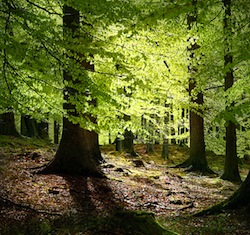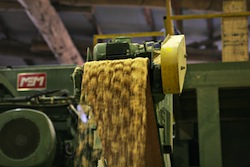The Giving Trees
 Nature is tough to keep up with. Spider silk is five times stronger than steel. Dogs can undrench themselves in a fraction of a second without the energy cost of a clothes dryer. Plants have always been better at additive manufacturing than we have. And now there’s wood gunk putting us to shame.
Nature is tough to keep up with. Spider silk is five times stronger than steel. Dogs can undrench themselves in a fraction of a second without the energy cost of a clothes dryer. Plants have always been better at additive manufacturing than we have. And now there’s wood gunk putting us to shame.
Nanocrystalline cellulose, or NCC, is the politically correct term for “wood gunk,” but wood gunk it is – the result of processing wood pulp. Turns out the stuff is even stronger than spider silk, is biodegradable and harmless to humans, and conducts electricity well enough that one day it will be an essential component in that floppy, foldy, flexible television set you’ve always dreamed of.
What’s more, it’s expected to be an industry worth $600 billion annually within the next eight to ten years. The U.S. Forestry Service has already jumped into the fray, opening a pilot NCC processing facility outside Madison, Wisconsin; other private industries are opening sites of their own. Even more amazing than NCC’s litany of physical properties is that producing it doesn’t actually require harming more trees. NCC can be produced from deadfalls, twigs, sawdust, bark – plenty of which is left over by paper production and timber processing as waste. No need to clear cut any further.
 Some experts have NCC potential to that of carbon nanotubes: it conducts like metal and is formable like plastic; it’s strong, tensile, endless, ridiculously cheap, and so safe you can eat it. Indeed, some experts predict that widespread NCC use will mean the end of inorganic plastics forever; it’s already planned as a replacement for many car parts and disposable plastics.
Some experts have NCC potential to that of carbon nanotubes: it conducts like metal and is formable like plastic; it’s strong, tensile, endless, ridiculously cheap, and so safe you can eat it. Indeed, some experts predict that widespread NCC use will mean the end of inorganic plastics forever; it’s already planned as a replacement for many car parts and disposable plastics.
When people think of “new materials,” too often they look to synthetic miracles born in a lab. It would seem that nature has proven once again some of the newest materials have been around for a very long time, and are ours for use if we can learn how to capitalize on them.










